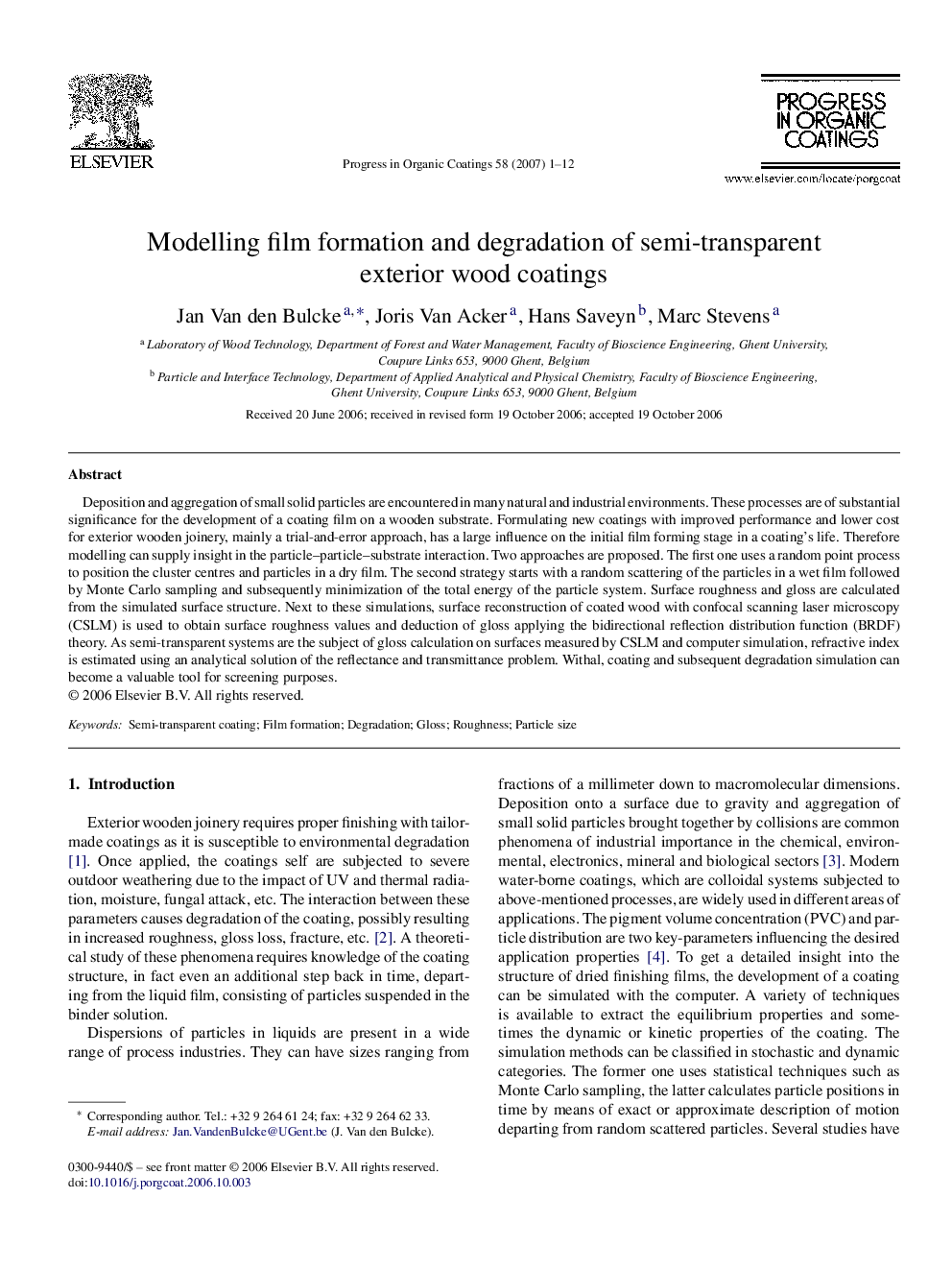| Article ID | Journal | Published Year | Pages | File Type |
|---|---|---|---|---|
| 693680 | Progress in Organic Coatings | 2007 | 12 Pages |
Abstract
Deposition and aggregation of small solid particles are encountered in many natural and industrial environments. These processes are of substantial significance for the development of a coating film on a wooden substrate. Formulating new coatings with improved performance and lower cost for exterior wooden joinery, mainly a trial-and-error approach, has a large influence on the initial film forming stage in a coating's life. Therefore modelling can supply insight in the particle-particle-substrate interaction. Two approaches are proposed. The first one uses a random point process to position the cluster centres and particles in a dry film. The second strategy starts with a random scattering of the particles in a wet film followed by Monte Carlo sampling and subsequently minimization of the total energy of the particle system. Surface roughness and gloss are calculated from the simulated surface structure. Next to these simulations, surface reconstruction of coated wood with confocal scanning laser microscopy (CSLM) is used to obtain surface roughness values and deduction of gloss applying the bidirectional reflection distribution function (BRDF) theory. As semi-transparent systems are the subject of gloss calculation on surfaces measured by CSLM and computer simulation, refractive index is estimated using an analytical solution of the reflectance and transmittance problem. Withal, coating and subsequent degradation simulation can become a valuable tool for screening purposes.
Related Topics
Physical Sciences and Engineering
Chemical Engineering
Process Chemistry and Technology
Authors
Jan Van den Bulcke, Joris Van Acker, Hans Saveyn, Marc Stevens,
